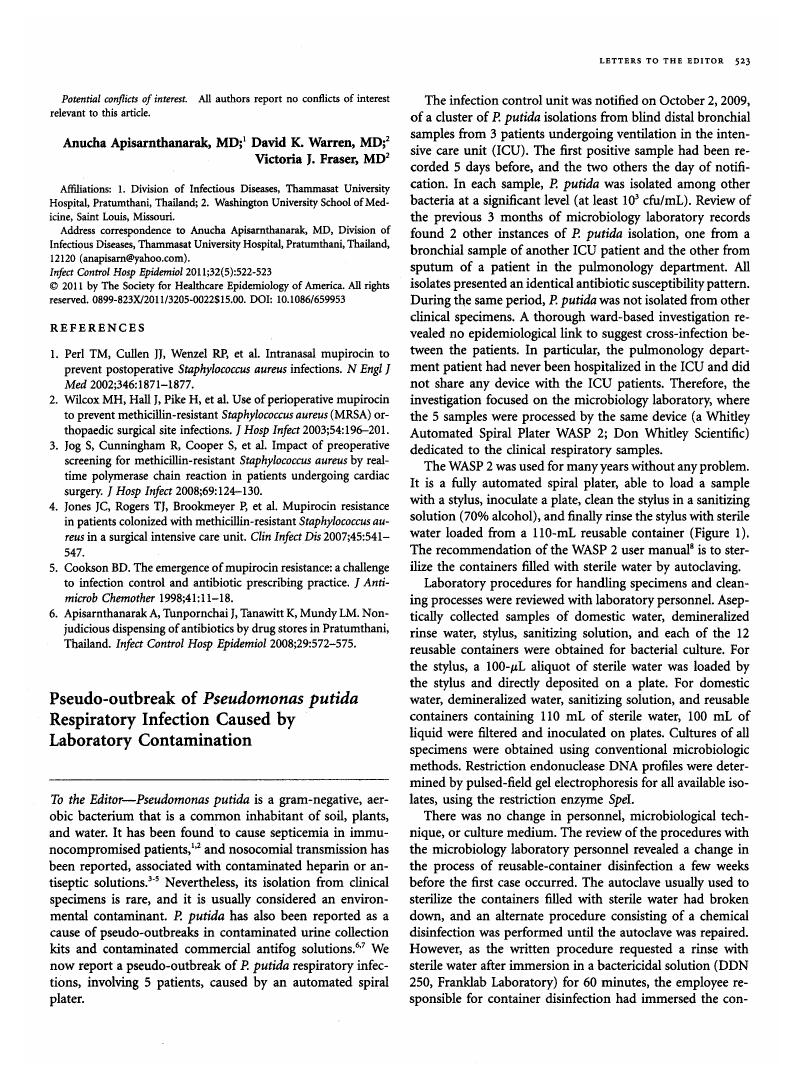Crossref Citations
This article has been cited by the following publications. This list is generated based on data provided by Crossref.
Weber, David J.
and
Rutala, William A.
2012.
Lessons Learned From Outbreaks and Pseudo-Outbreaks Associated with Bronchoscopy.
Infection Control & Hospital Epidemiology,
Vol. 33,
Issue. 3,
p.
230.
Curran, Evonne T
2013.
Outbreak Column 7: Pseudo-outbreaks (part 1).
Journal of Infection Prevention,
Vol. 14,
Issue. 2,
p.
69.
Woo, Kwang-Sook
Choi, Jae-Lim
Kim, Bo-Ram
Kim, Ji-Eun
Kim, Kyeong-Hee
Kim, Jeong-Man
and
Han, Jin-Yeong
2014.
Outbreak ofPseudomonas OryzihabitansPseudobacteremia Related to Contaminated Equipment in an Emergency Room of a Tertiary Hospital in Korea.
Infection & Chemotherapy,
Vol. 46,
Issue. 1,
p.
42.
D'Agata, Erika
2015.
Mandell, Douglas, and Bennett's Principles and Practice of Infectious Diseases.
p.
2518.
Georgakopoulou, Vasiliki
Avramopoulos, Pantelis
Papalexis, Petros
Bitsani, Aikaterini
Damaskos, Christos
Garmpi, Anna
Gkoufa, Aikaterini
Garmpis, Nikolaos
Mantzouranis, Konstantinos
Chlapoutakis, Serafeim
Sklapani, Pagona
Trakas, Nikolaos
and
Spandidos, Demetrios
2021.
Exacerbation of bronchiectasis by Pseudomonas putida complicating COVID‑19 disease: A case report.
Experimental and Therapeutic Medicine,
Vol. 22,
Issue. 6,



